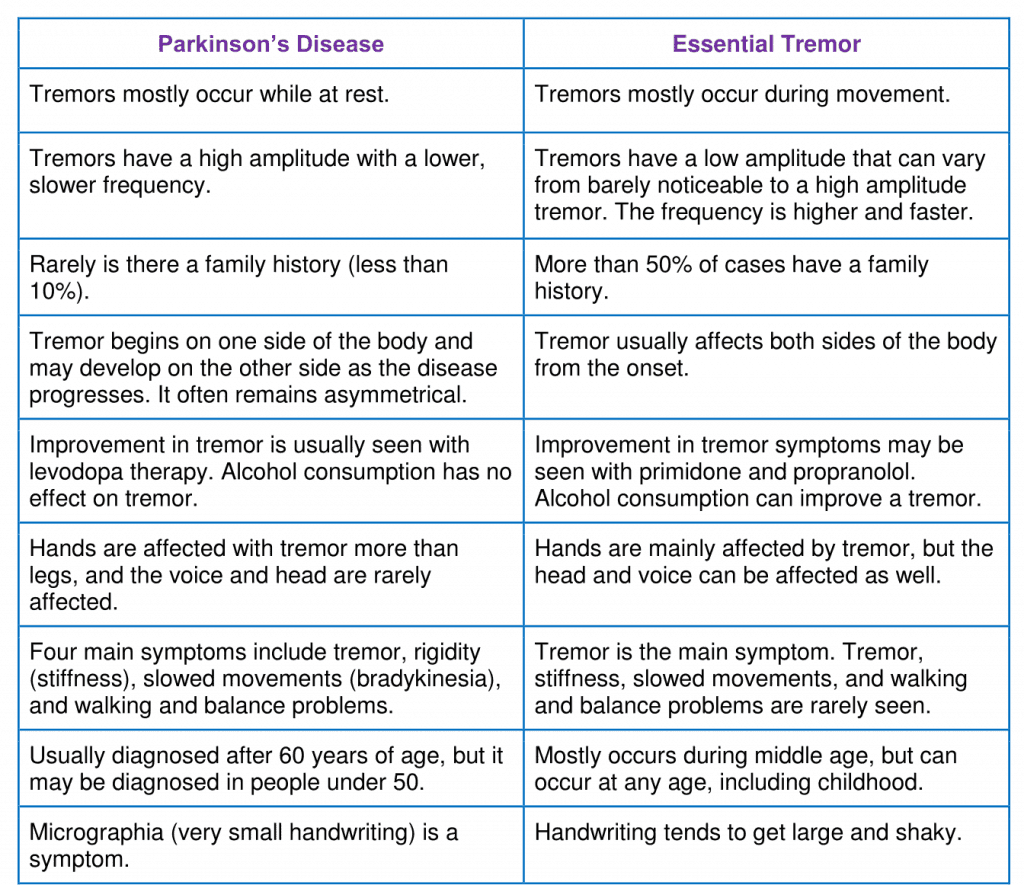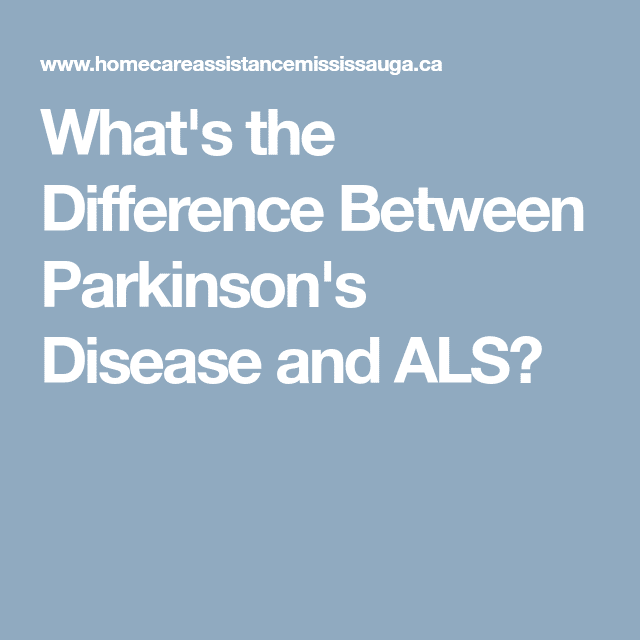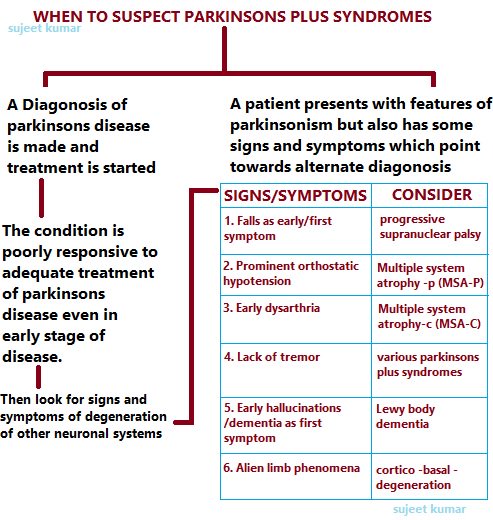Dementia With Lewy Bodies
Of people with dementia, the type of parkinsonism called dementia with Lewy bodies is the second most common cause of dementia, after Alzheimers disease in the elderly. Many are diagnosed at first with Alzheimers disease due to memory or cognitive disorders and then later as dementia with Lewy bodies as the motor symptoms common to Parkinsons progress.
Lewy bodies are abnormal deposits of protein on the nerve cells in the brain. If the production of dopamine, a neurotransmitter, produced by those nerve cells is disrupted due to the buildup of Lewy bodies on those cells, too little dopamine is produced, which can cause the symptoms of Parkinsons.
What Are The Complications Of Parkinson Disease
Parkinson disease causes physical symptoms at first. Problems with cognitive function, including forgetfulness and trouble with concentration, may arise later. As the disease gets worse with time, many people develop dementia. This can cause profound memory loss and makes it hard to maintain relationships.
Parkinson disease dementia can cause problems with:
- Speaking and communicating with others
- Problem solving
- Paying attention
If you have Parkinson disease and dementia, in time, you likely won’t be able to live by yourself. Dementia affects your ability to care of yourself, even if you can still physically do daily tasks.
Experts don’t understand how or why dementia often occurs with Parkinson disease. Its clear, though, that dementia and problems with cognitive function are linked to changes in the brain that cause problems with movement. As with Parkinson disease, dementia occurs when nerve cells degenerate, leading to chemical changes in the brain. Parkinson disease dementia may be treated with medicines also used to treat Alzheimer’s disease, another type of dementia.
Other Causes Of Parkinsonism
“Parkinsonism” is the umbrella term used to describe the symptoms of tremors, muscle rigidity and slowness of movement.
Parkinson’s disease is the most common type of parkinsonism, but there are also some rarer types where a specific cause can be identified.
These include parkinsonism caused by:
- medication where symptoms develop after taking certain medications, such as some types of antipsychotic medication, and usually improve once the medication is stopped
- other progressive brain conditions such as progressive supranuclear palsy, multiple system atrophy and corticobasal degeneration
- cerebrovascular disease where a series of small strokes cause several parts of the brain to die
You can read more about parkinsonism on the Parkinson’s UK website.
Page last reviewed: 03 November 2022 Next review due: 03 November 2025
You May Like: Parkinson’s Disease Recent Research
Parkinsons Disease Vs Als: Us Prevalence
One million Americans live with Parkinsons disease. The average cost of Parkinsons disease including treatment, lost work wages, and social security payments is $25 billion annually in the U.S.
It is not clear how many people are affected by ALS, but the estimates range between 12,000 and 15,000. Doctors tell roughly 5,000 patients annually that they have ALS. Records on ALS have not been well kept across the country, so estimates may fall way below the actual rates. Common age of ALS diagnosis is between 55 and 75, and life expectancy is anywhere between two and five years after the onset of symptoms. Longevity in ALS is strongly linked to a persons age. Younger individuals with ALS tend to live longer than those diagnosed at an older age.
Read Also: Masked Facies Parkinsons Disease
Life Expectancy Of Parkinsonism Patients In The General Population

Absolute life expectancy estimates of parkinsonism are easy to translate to patients.
-
Patients with parkinsonism have a reduced life expectancy compared to matched controls.
-
The most prominent decrease in life expectancy is observed if parkinsonism is diagnosed before the age of 70.
-
The number of years lived with parkinsonism in the general population is relatively low.
Also Check: Does Restore Gold Work For Parkinson’s
Whats The Difference Between Vascular Parkinsonism And Parkinsons
As the name implies, vascular parkinsonism is caused by cerebrovascular disease which affects the blood supply to the brain. Vascular parkinsonism is caused by one or more small strokes, while Parkinsons is caused by a gradual loss of nerve cells. One major difference from Parkinsons is that its not progressive, while Parkinsons becomes worse with time. Another difference is that there are no tremors in vascular parkinsonism.
For more information on vascular parkinsonism, read this journal article.
How Is Psp Different From Parkinsons Disease
PSP is often misdiagnosed as Parkinsons disease, especially early in the disorder, as they share many symptoms, including stiffness, movement difficulties, clumsiness, bradykinesia , and rigidity of muscles. The onset of both diseases is in late middle age. However, PSP progresses more rapidly than Parkinsons disease.
- People with PSP usually stand exceptionally straight or occasionally tilt their heads backward . This is termed axial rigidity. Those with Parkinsons disease usually bend forward.
- Problems with speech and swallowing are much more common and severe in PSP than in Parkinsons disease and tend to show up earlier in the disease.
- Eye movements are abnormal in PSP but close to normal in Parkinsons disease.
- Tremor is rare in PSP but very common in individuals with Parkinsons disease.
Although individuals with Parkinsons disease markedly benefit from the drug levodopa, people with PSP respond minimally and only briefly to this drug.
People with PSP show accumulation of the protein tau in affected brain cells, whereas people with Parkinsons disease show accumulation of a different protein called alpha-synuclein.
Dont Miss: Fitness Counts Parkinsons Disease
Also Check: Inhaler For Parkinson’s Disease
Living With Parkinson Disease
These measures can help you live well with Parkinson disease:
- An exercise routine can help keep muscles flexible and mobile. Exercise also releases natural brain chemicals that can improve emotional well-being.
- High protein meals can benefit your brain chemistry
- Physical, occupational, and speech therapy can help your ability to care for yourself and communicate with others
- If you or your family has questions about Parkinson disease, want information about treatment, or need to find support, you can contact the American Parkinson Disease Association.
About Paula Mcfeely Wiener Msw Lcsw
Paula is a licensed clinical social worker and senior information specialist with the Parkinsons Foundation. Since receiving her MSW in 1995, she has worked almost exclusively with the senior population. Her experience includes being a center coordinator for a Parkinsons Foundation Center of Excellence, leading a number of PD support groups, educating patients, families, and health care professionals about the disease, and answering questions on the Helpline for 12 years. Paula is passionate about improving understanding and care for people with Parkinsons disease and their family members. Paulas father was diagnosed with atypical parkinsonism which gave her a very personal understanding of what patients and families with this diagnosis go through.
Recommended Reading: Early Signs Of Parkinson’s Disease Nhs
Parkinsonism Vs Parkinson’s Disease
Often confused as one and the same, Parkinsons disease is actually the most common kind of Parkinsonism, accounting for nearly 80% of all cases.2 PD is a progressive neurodegenerative disorder characterized by the same motor conditions as Parkinsonisms including tremor, rigidity, bradykinesia, and impaired balance. Other contributing causes of Parkinsonism include multiple system atrophy, progressive supranuclear palsy, and corticobasal degeneration. PD has no directly attributable cause or cure.
Motor Circuit In Parkinson Disease
The basal ganglia motor circuit modulates the cortical output necessary for normal movement .
Signals from the cerebral cortex are processed through the basal ganglia-thalamocortical motor circuit and return to the same area via a feedback pathway. Output from the motor circuit is directed through the internal segment of the globus pallidus and the substantia nigra pars reticulata . This inhibitory output is directed to the thalamocortical pathway and suppresses movement.
Two pathways exist within the basal ganglia circuit, the direct and indirect pathways, as follows:
-
In the direct pathway, outflow from the striatum directly inhibits the GPi and SNr striatal neurons containing D1 receptors constitute the direct pathway and project to the GPi/SNr
-
The indirect pathway contains inhibitory connections between the striatum and the external segment of the globus pallidus and between the GPe and the subthalamic nucleus striatal neurons with D2 receptors are part of the indirect pathway and project to the GPe
The STN exerts an excitatory influence on the GPi and SNr. The GPi/SNr sends inhibitory output to the ventral lateral nucleus of the thalamus. Dopamine is released from nigrostriatal neurons to activate the direct pathway and inhibit the indirect pathway. In Parkinson disease, decreased striatal dopamine causes increased inhibitory output from the GPi/SNr via both the direct and indirect pathways .
You May Like: What Tests Are Done For Parkinson’s Disease
Depression With Huntingtons Disease
Due to the nature and lower life expectancy of Huntingtons disease, it is common for a diagnosis to lead to depression. Patients with Huntingtons are at a higher risk of suicide.
If you are struggling with your Huntingtons diagnosis or prognosis, contact the Substance Abuse and Mental Health Services Administration National Helpline online or call 1-800-662-4357 to seek help.
If you are having suicidal thoughts, dial 988 to contact the 988 Suicide & Crisis Lifeline and connect with a trained counselor. If you or a loved one are in immediate danger, call 911.
For more mental health resources, including a helpful list of links and hotline numbers, see our National Helpline Database.
Parkinsonism And Parkinsons Disease

If a person has parkinsonism, does that mean he or she has Parkinsons disease? Likewise, if a person has Parkinsons disease, does that mean he or she has parkinsonism?
These are great questions! In this lesson, Ill explain what these two terms mean, the difference between parkinsonism and Parkinsons disease, and six of the most common types of atypical parkinsonism.
In addition, Ill explain the ICD-10-CM coding guidelines and conventions and how to code for complications of Parkinsons disease and parkinsonism.
My dear friends personal story related to Parkinsons disease is also here to help you better understand the disease process. Bill was recently diagnosed with Parkinsons.
Parkinsonism and Parkinsons disease are two terms that can be confusing. According to the Parkinsons Foundation, parkinsonism is a term used to describe a group of neurological conditions that present with motor symptoms that are also found in Parkinsons disease. Parkinsons disease is the most common form of parkinsonism.
Because the chief symptoms of Parkinsons are also found in other types of parkinsonism, it can be difficult for a physician to make a definitive diagnosis in the beginning of the disease process. Parkinsonism can have several different causes that can be totally different from Parkinsons disease.
Read Also: Parkinson Silverware
Also Check: Parkinson’s And Numb Feet
What Causes Parkinson Disease
Parkinson disease arises from decreased dopamine production in the brain. The absence of dopamine makes it hard for the brain to coordinate muscle movements. Low dopamine also contributes to mood and cognitive problems later in the course of the disease. Experts don’t know what triggers the development of Parkinson disease most of the time. Early onset Parkinson disease is often inherited and is the result of certain gene defects.
Difference Between Dementia With Lewy Bodies And Parkinsons
Dementia with Lewy bodies and Parkinsons Disease are two neurological conditions that have many similarities and differences. Both conditions affect the brain and nervous system, though they cause different signs and symptoms. It is important to understand the differences between these two conditions in order to provide the best care for those living with them. This article will provide an overview of the differences between Dementia with Lewy bodies and Parkinsons disease.
Also Check: Can You Live A Long Life With Parkinson’s Disease
Lifestyle And Other Protective Factors
Cigarette smoking and caffeine consumption are the two most consistent protective factors associated with a reduced risk of PD. Other reported associations include higher serum urate, ibuprofen use and exercise, among others. The negative association between cigarette smoking and PD is most intriguing. This inverse relationship is not easily explained, but some have suggested that PD-related cautious personality predisposes some individuals to quitting neuroprotective smoking as the biological mechanism involved in PD. The other hypothesis links nicotine to dopaminergic neuronal protection since it has been shown to stimulate the release of dopamine in the striatum and preserve dopaminergic function in experimental models. It is also possible that there are other unidentified neuroprotective components in cigarette smoke.
The relative risk reduction of PD among caffeine drinkers is between 0.5 and 0.8 and, similar to smoking, a dose-dependent effect has been consistently demonstrated in most studies. Caffeine, an antagonist of adenosine A2a receptor, has been postulated to exert neuroprotective role by blocking this receptor. In addition to caffeine, it is possible that antioxidants present in some beverages may contribute to a protective effect among black tea drinkers, independent of caffeine.
Ethics Approval And Consent To Participate
The study was approved by the Ethical Committee of Mahidol University Institutional Review Board, Mahidol University, Thailand and complied with the standard guideline of the Declaration of Helsinki. All participants signed an informed consent form before data collection. In addition, informed consent was obtained from all participants involved in in the study and all participants gave the permission for the publication.
You May Like: Tests For Parkinson’s Disease Mayo Clinic
Parkinsons Vs Multiple Sclerosis: How Are These Conditions Different
Parkinsons Disease and Multiple Sclerosis are two medical conditions that are frequently confused with each other since they are both progressive and have similar symptoms, but there are some significant differences between the two.
Here we will discuss the difference and similarities between the two.
Environmental Factors And Exposures
Exposure to pesticides and a history of head injury have each been linked with PD, but the risks are modest. Never drinking caffeinated beverages is also associated with small increases in risk of developing PD.
Low concentrations of urate in the blood is associated with an increased risk of PD.
Drug-induced parkinsonism
Different medical drugs have been implicated in cases of parkinsonism. Drug-induced parkinsonism is normally reversible by stopping the offending agent. Drugs include:
Also Check: Parkinson’s Exercises For Balance
What Is The Difference Between Parkinsons Disease And Parkinsonism
Parkinsons disease is a neurodegenerative disorder that leads to movement symptoms and non-movement symptoms. It is sometimes called idiopathic , but the cause is believed to be a combination of genetic and environmental factors.
Parkinsonism is a more general term that encompasses the symptoms of Parkinsons disease. A variety of disorders or syndromes can lead to Parkinsonism, and these syndromes can lead to faster progression of symptoms, increased falling, presence of hallucinations, and can be non-responsive to levodopa .
The majority of people with the symptoms of Parkinsons disease will be diagnosed with idiopathic Parkinsons disease. Between 10% to 15% of these people will be diagnosed with Parkinsonism that is caused by something else.
Read Also: Are Hallucinations A Symptom Of Parkinsons
Multiple System Atrophy Formerly Called Shy

As predicted by the name of this parkinsonism, multiple system atrophy affects multiple systems of the body. It affects both the motor skills movement system and the involuntary system of the body. Though the symptoms can often be treated with medications, there is no cure. In addition, there are no drugs that are able to slow the progress of MSA.
Don’t Miss: Are Adjustable Beds Good For Parkinson’s Patients
Deep Brain Stimulation For Parkinsons: Am I A Candidate
Deep brain stimulation is not a cure, but it can relieve your symptoms from Parkinsons disease when medications are not an option. Only you and your doctor can decide if this surgical procedure is right for you. You may be a candidate for deep brain stimulation if:
- You have idiopathic Parkinsons disease. Patients with atypical parkinsonism are not candidates.
- You have good motor function and independence during your best on state when taking the drug Sinemet.
You May Like: Exercises For Elderly With Parkinsons Disease
Whats The Difference Between Corticobasal Degeneration And Parkinsons
The main difference between CBD and Parkinsons is that it usually starts on one side with the gradual loss of use of one hand or leg , and there may be little flicks of involuntary muscle jerks. Walking and balance difficulties usually occur later in CBD than in Parkinsons. Also, in CBD, a person may have trouble with purposeful movements, such as buttoning a shirt or cutting food.
For more information on corticobasal degeneration, read this information page.
Read Also: Rls And Parkinson’s Disease
How Can You Tell If Its Parkinsons Disease
Doctors will base a diagnosis on a persons symptoms, including the order in which they appear. Some conditions that resemble Parkinsons disease cause unrelated symptoms in the early stage and do not produce Parkinson-like symptoms until they have progressed.
Other conditions manifest Parkinson-like symptoms early but also cause other symptoms that are not typical of Parkinsons disease.
Diagnosing NPH involves medical tests in addition to an assessment of symptoms. Because NPH is due to poor drainage of cerebral spinal fluid, other diagnostic tools are necessary. These may include:
- physical examination
The combination of carbidopa and levodopa sells under the brand name Sinemet.
Other medications may include:
- dopamine agonists, such as pramipexole , which trigger the production of dopamine in the brain
- amantadine to decrease involuntary movements
- various classes of enzyme inhibitors, which slow enzymes that break down dopamine
- anticholinergic drugs, such as trihexyphenidyl , which decrease tremors and muscle rigidity by blocking acetylcholine, a brain chemical involved in movement
How Is Parkinsons Disease Treated
There is no cure for Parkinsons disease. However, medications and other treatments can help relieve some of your symptoms. Exercise can help your Parkinsons symptoms significantly. In addition, physical therapy, occupational therapy and speech-language therapy can help with walking and balance problems, eating and swallowing challenges and speech problems. Surgery is an option for some patients.
Recommended Reading: Does Vitamin B12 Help Parkinsons
You May Like: Prayer For Healing Of Parkinson’s Disease